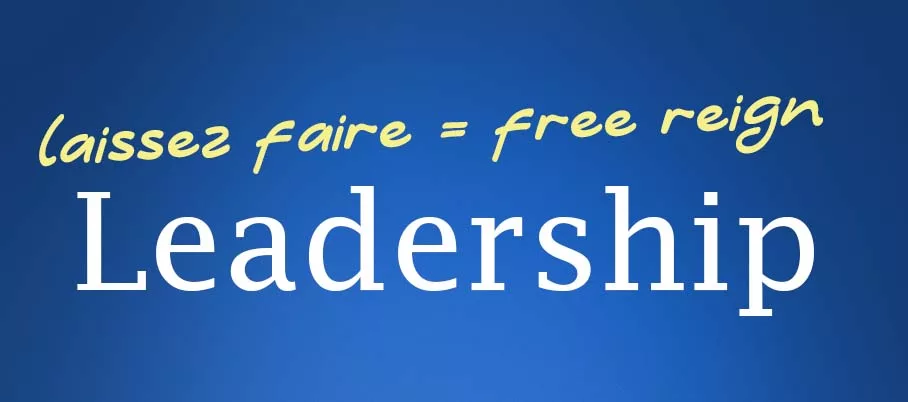
What is Free Reign Leadership?
Every organization needs leadership. It’s also the glue that holds everything together. governing oversight is also the force that moves things in the right direction. Free Reign Leadership is a specific style of leadership that offers some untapped benefits to the savvy leader who deploys it.
Brief overview of leadership styles
Although the goal is the same, leaders use different styles of leadership. They each have their benefits and drawbacks. They are:
Autocratic Leadership:
Autocratic leaders make decisions by themselves without input from others.
Democratic Leadership:
Democratic leaders seek input and feedback from team members.
Transformational Leadership:
Transformational leaders inspire and help their team by supporting and developing them the way to their goals.
Transactional Leadership:
Transactional leaders focus on offering rewards or punishments based on performance and loyalty to the rules.
Servant Leadership:
Servant leaders focus on the needs of their team members above their own.
Charismatic Leadership:
Charismatic leaders have attractive personalities that inspire loyalty from their followers.
Laissez-Faire Leadership:
Laissez-faire leaders prefer the team to make their own decisions and manage their own tasks.
Situational Leadership:
Situational leaders change their leadership style based on the specific needs of their team.
Bureaucratic Leadership:
Bureaucratic leaders hold strictly to established rules, policies, and procedures.
Adaptive Leadership:
Adaptive leaders thrive in volatile spaces by embracing uncertainty and pushing innovation.
Strategic Leadership:
Definition: Strategic leaders adopt a long-term focus on setting overarching goals.
Introduction to free reign leadership
The leadership style we are exploring is more of freedom-drive leadership style. This style of free reign leadership focuses on allowing the team members to make their own decisions and manage their own tasks.
If this sounds familiar, it should. You’re probably realizing this sounds like the laissez-faire style of leadership. This is the more technical name for free reign leadership.
Understanding Free Rein Leadership
What does Laissez-Faire Leadership mean?
The center of the phrase comes from a French phrase. Laissez faire which literally means “allow to do,” with the overall idea being “let people do as they choose.” The origins of laissez-faire are associated with the Physiocrats, a group of 18th-century French economists who believed that government policy should not interfere with the operation of natural economic laws.
When was free reign leadership created?
Free reign leadership wasn’t always a major leadership style. This aspect of the people being able to do as they choose created the foundation for this unique style of leadership. Laissez faire leadership was developed in the 1930 as a result of leadership studies.

Advantages of Free Rein Leadership
In this style of leadership, the supervisor offers the main goals. When they get little to no oversight (otherwise known as micromanaging), the team is encouraged to find the solutions and answers themselves.
Minimal Supervision
Team members receive a great deal of autonomy without constant supervision or interference.
Trust in Subordinates
A significant amount of trust must be placed in the members of the team in order for this leadership structure to work, .
Encouraging Creativity and Innovation
Free reign leadership is a style chosen for a specific type of outcome. The team members are encouraged to think outside of the box. This creates an uninhibited collection of bold ideas for the team to work with.
Focus on results
Laissez faire leadership focuses on outcomes rather than focusing on the process. Leaders believe that their team members will deliver results. They wait for the results. They don’t really care much about the path taken to achieve them.
Establishment of leaders
One of the main benefits of this style of leadership is that it helps season new leaders faster. The encouraging environment of trust and communication emboldens team members to step up and show their skills. This confidence-building practice helps them to flex their leadership muscles sooner.
Potential drawbacks of free rein leadership

Team members must be highly skilled
This style works best when those on the team are highly skilled and capable of working independently. They also need to be self-motivated. It may not be the best style for teams lacking experience. It might not work if the team needs more guidance.
Require clear objectives and expectations
With the level of trust and skill needed to pull off free reign leadership, it could be discouraging to implement. Aside from those requirements, the team needs clear objectives and expectations. The leader is, therefore, forced to inspect the direction of the work although they are not giving direct oversight. They have to know all the details beforehand, in order to give clear directives.
Risk of lack of direction
Without clear expectation from leadership, team members can easily feel lost or uncertain about their roles and responsibilities. This can lead to disorganization and frustration.
Disorganization
Without guidance and clear expectations, the team can lack structure and direction. They may struggle with coordination which can lead to inefficiencies.
Best Practices for Implementing Free Rein Leadership
Building trust and communication
The first place to start is to foster a culture of trust and communication. You cannot assume the team knows the level of trust you are bestowing on them. This is where communication comes in. Take some time out to speak to them, both as a group and as individuals. They group conversation will be to build unity among the members. Because of this, you will use “we” and “us” statements and focus on group dynamics. That means focusing on how the team relates to one another.
Couple that with 1-on-1 conversations to build intimacy and let each person know that you are connected to them as individuals.
Providing necessary resources and support
This is a little tip to teach the team to be resourceful. Presenting the team with support and resources lets them know that they are not abandoned. Although they have help, they are required to pursue this help by taking initiative. This is called being resourceful.
Encouraging feedback and collaboration
The laissez faire leadership structure is an experiment in collaboration itself. You establish your team’s objectives and expectations. This is where you ask for feedback. These check ins help you discern if your team will meet the expectations you’ve set for them.
Recognizing and celebrating successes
Free reign leadership teaches your follower to be leaders. While this builds courage after they successfully meet expectations, encouragement is needed while they are in the middle of their projects and tasks.
They are most likely stretching themselves to do something they’ve never done before. Recognition and incentives help them to know that you are watching. They also help them to not become attached to the outcome.
They will see that being recognized before they complete the work values their problem solving skills and creativity.

Above is my FREE infographic for a successful leadership journey. Feel free to share and repost. I only ask that you link back to this page in return.
I actually have 5 more on topics like Creativity, Life Purpose, Productivity, and more. If you would like to get my 6-Pack Infographic set for free click below.
Case Studies: Real-Life Examples of Free Rein Leadership
Case study 1: Apple’s successful implementation of free rein leadership
The late Steve Jobs (the founder of Apple Inc) was said to be a laissez faire leader. He allowed employees to make their own decisions. This helped Apple to create high-quality, innovative products for the technology market.
Team members in his leadership environment were able to make more courageous chances without the immediate criticism of an overbearing supervisor.
Example of successful free rein leadership in business
A good example of laissez faire leadership can be seen in the technology industry. Employees of Tech companies have the freedom to work on projects with sparse oversight. They use their creativity and initiative to come up with innovative solutions to problems.
For example, a software development team have the overall goal of creating a new product. The team is given the freedom to come up with their own solutions and methods of achieving that goal. This free-rein leadership gives employees the autonomy to make their own decisions and take ownership of their work. This leads to increased motivation and job satisfaction.
Conclusion
Free reign leadership is a powerful leadership style. Although this is true, the leader must surround themselves with highly skilled people. It may be the right type of leadership that you need to take your team to a higher level of production and innovation. It’s not without it’s setbacks, though. Constant learning and a culture of honest feedback will help to correct most flaws.

